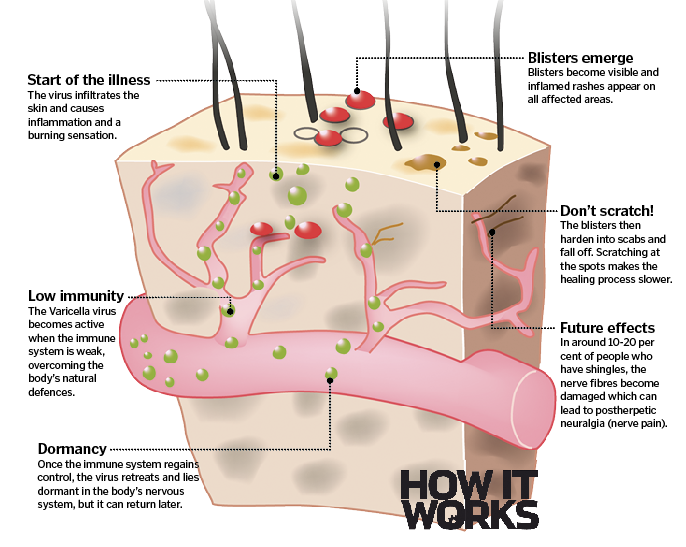Human Body: What is chickenpox?
by Scott Dutfield · 27/09/2019

Discover the biology behind the infamous childhood ailment and why it never really goes away…
Chickenpox is a strain of the Varicella zoster virus, which many of us have experienced during our youth. Most prominent in children under ten, the virus is contracted through coughing and sneezing or transferred on shared objects, which makes schools a prime location.
The most famous symptom is the appearance of small itchy red spots, which vary in size from 10-20 millimetres (0.4-0.8 inches) across. The extent can vary but in most cases they cover the face, arms, legs, stomach and back. These develop into fluid-filled blisters and are often accompanied by a fever. The blisters burst, scab over and fall off within a few days, but new waves of spots can emerge to replace them; it usually takes one to two weeks for the body to regain control. Chickenpox is rarely serious but it is important not to interfere with the scabs as infection can make it more severe.
A vaccine is only offered in extreme circumstances when an individual may have a weak immune system or be particularly vulnerable to the disease.
After the outbreak, chickenpox doesn’t disappear entirely. The disease lies in a dormant state within the body as your immune system keeps it under wraps. The infection can break out again later and reappear as shingles. A rash builds up on a certain point of the body and the symptoms return, most commonly in people over 50. On average, three in every 1,000 people contract shingles in the UK each year.
When chickenpox strikes back…
Get under the skin to see how shingles can catch the body unawares
This article was originally published in How It Works issue 59, written by Jack Griffiths
For more science and technology articles, pick up the latest copy of How It Works from all good retailers or from our website now. If you have a tablet or smartphone, you can also download the digital version onto your iOS or Android device. To make sure you never miss an issue of How It Works magazine, subscribe today!







